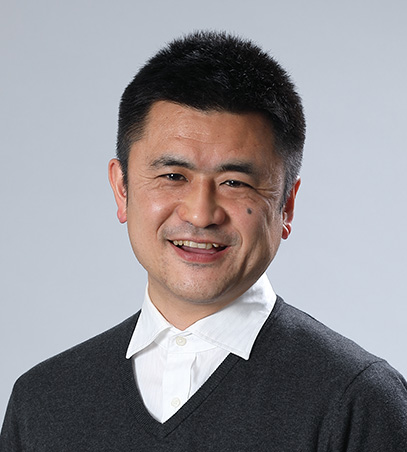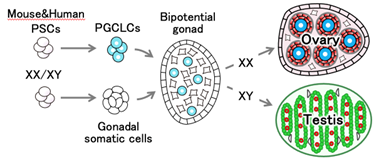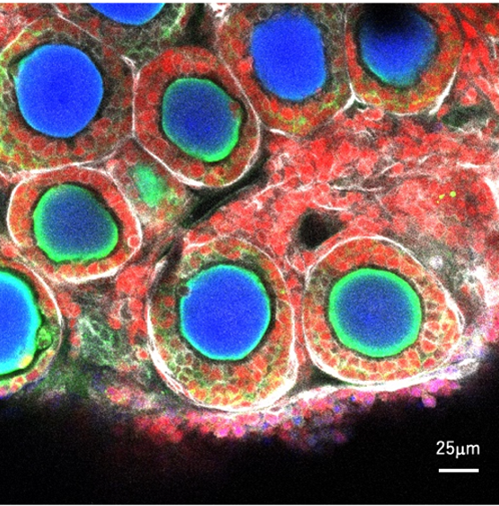YOSHINO Takashi
Specially Appointed Assistant Professor (Full Time)
PRIMe, The University of Osaka
- Related Website:
- Orcid Researchmap
Our researchers
PRIMe researchers from diverse fields of study, nationalities, and backgrounds come together and collaborate “under-one-roof” to conduct interdisciplinary and integrative research.

YOSHINO Takashi
Specially Appointed Assistant Professor (Full Time)
PRIMe, The University of Osaka
Research Outline

Gonads (Ovary and Testis) produce eggs and sperms and secrete sex hormones to form sex-specific bodies. Gonadal abnormality causes infertility and disorder of sex differentiation. We try to reconstitute human gonadal organoids to establish novel treatments for these diseases.
The formation of gonads involves the sex differentiation of embryonic bipotential gonads, composed of primordial germ cells (PGCs: progenitor of oocyte and sperm) and gonadal somatic cells. Reconstituting bipotential gonads from pluripotent stem cells (PSCs) is complex. While PGC-like cells (PGCLCs) can be induced from murine and human PSCs, the induction of gonadal somatic cells has been challenging due to the lack of studies on the onset of gonadal somatic cell differentiation (Fig1).

Our research has focused on the development of lateral plate mesoderm and its derivatives, particularly the coelomic epithelium, which is the source of gonadal somatic cells. We have successfully established a method to induce gonadal somatic cells from murine female (XX) ESCs. These induced cells and female PGCLCs form aggregates that develop into ovarian organoids. These organoids are characterized by oocytes surrounded by female supporting cells (granulosa cells) and hormone-secreting cells (Theca cells) (Fig2). Notably, we have also observed the birth of pups with eggs derived from oocytes of ovarian organoids, marking a significant milestone in our research.
We currently try to reconstitute murine testicular organoids and human gonadal organoids by developing our induction protocol.